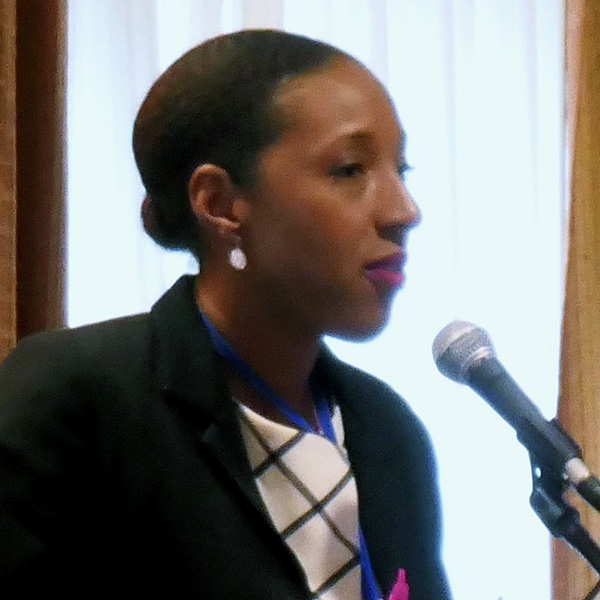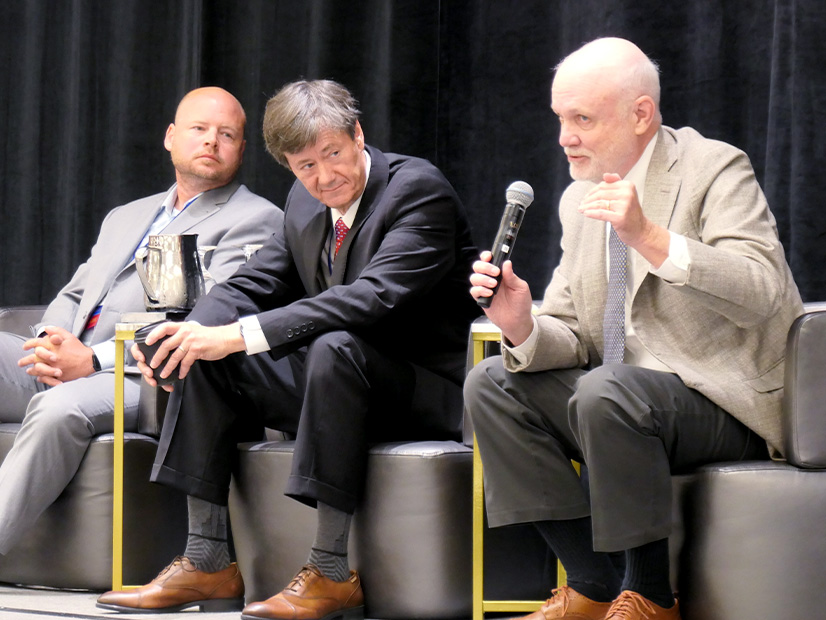Stakeholders Endorse Manual Changes Related to NERC Winter Readiness
The Operating Committee voted during its Aug. 10 meeting to endorse manual revisions to conform with essential actions NERC included in a May cold weather readiness alert.
PJM’s Donnie Bielak said the changes to Manual 13 are essentially verbatim from NERC’s language and focus on ensuring that infrastructure used for manual load shedding doesn’t overlap with equipment designated for use in underfrequency or undervoltage load shed. The manual changes are slated to go before the Markets and Reliability Committee during its Aug. 24 meeting.
The NERC alert includes eight actions for asset owners and RTOs to take to increase readiness for winter storms. The additional actions include: identifying generators capable of operating at the lowest hourly temperature seen at their locations since 2000; updating balancing authorities’ operating plans to account for fuel supply, environmental constraints and availability; and generation owners detailing each facility’s cold weather preparedness plan, cold weather critical components and any freeze protection measures that have been implemented on those components prior to the upcoming winter.
Stakeholders encouraged PJM to talk with generation owners about the NERC alert actions that apply to them and their responsibilities.
PJM Proposes Synchronized Reserve Deployment Language
PJM brought a quick-fix issue change, problem statement and a proposal to specify that generators should respond to synchronized reserve deployments immediately after receiving an Inter-Control Center Communications Protocol (ICCP) signal or an all-call message. Bielak said outreach to generators about poor reserve response rate has found that many wait until they receive the all-call message even after receiving the ICCP.
“You don’t need to wait for that all-call, if you get that ICCP to spin, start deploying your reserves,” he said. “The all-call should be more of a confirmation. … It is an older technology.”
The all-call is an automated phone message that can take a few minutes to reach all generators, Bielak said, while the ICCP signal can be transmitted nearly instantly following a reserve deployment.
Reserve performance has been a concern since the response rate declined following an overhaul of the reserve market implemented Oct. 1, 2022. During the July MRC meeting, PJM brought an issue charge and problem statement seeking to open a broader stakeholder process, including the creation of a task force, to investigate several issues and possible solutions related to reserves. (See “PJM Seeks Stakeholder Process on Reserve Certainty,” PJM MRC/MC Briefs: July 26, 2023.)
July Sees Several Days of High Load Forecast Error
Load forecast error exceeded PJM’s 3% goal for several days in July, which PJM attributed to inaccurate weather forecasts. Delivering the operating metrics report, PJM’s Hong Chen said the 3% figure is an internal goal to measure forecasts against.
PJM overforecast loads July 25-29, when Bielak said a heat wave was expected to bring peaks around 152 to 154 GW. Unexpected thunderstorms contributed to temperatures coming in lower than forecasted, leading to a peak of 147 GW on July 27.
“We had up to 10, 15 degrees weather forecast error and that was consistent across the board from all our vendors,” PJM’s Joseph Mulhern said.
PJM’s analysis of the forecast during the heat wave suggests the error came down to weather, rather than load forecast error.
Stakeholders asked PJM to include a narrative explanation and any backcast analyses in future operating metrics reports when forecast error is high.
Bielak said loads were on track to near an “all-time peak” in the last week of July, but the loads didn’t materialize. PJM issued hot weather alerts for the entire RTO on July 26 through 28 and issued a maximum generation alert on July 27 and 28, triggering a NERC Energy Emergency Alert (EEA) Level 1. The hot weather alerts also defer transmission outages.
PJM issued a maintenance outage recall for the event and had good response from the resources that were offline, which was a small number given it being “peak season,” Bielak said. Both generation and transmission performed well through the event, he said.
PJM Proposes Manual Revisions Related to Communication Failures
PJM’s Ryan Nice presented proposed revisions to Manual 1, which relates to the control center and data exchange requirements, drafted through the document’s periodic review. The changes detail when transmission owners must notify PJM that interpersonal communication capabilities have been disrupted.
The new language specifies that communication can include several forms of contact, including cell phones, satellite or radio, and that a notification of failure has to be made only when all modes have failed.
PJM Brings Quick Fix Issue on Data Sharing
PJM presented a quick fix issue charge, problem statement and proposed manual changes to create a carve out from the requirement that PJM provide five days’ notice before providing confidential information to NERC, reliability coordinators, transmission operators and similar groups.
The problem statement says PJM regularly provides such information and has found the notification requirement can be inefficient and burdensome in certain instances. The proposed manual language would create an exception for data transmitted during a NERC audit or investigation into whether PJM is in compliance with reliability standards and when using tools created by regional entities, such as NERC’s Generator Availability Data System (GADS).
PJM Details Cybersecurity Threats
PJM Chief Information Security Officer Steve McElwee said new cybersecurity threats are rising, including the use of artificial intelligence to create targeted messages designed to trick targets into divulging sensitive information and groups ransoming data.
An offshoot of the language learning model ChatGPT has been created to bypass safeguards preventing the model from being used to create “phishing” emails aimed at stealing information, and McElwee highlighted recent Congressional testimony about the threat Chinese artificial intelligence advancements present the American electric industry.
McElwee said a “critical infrastructure company” has been targeted by an exploit found in the software Citrix, which allowed data to be collected on targeted systems. The Cybersecurity and Infrastructure Security Agency (CISA) has released an advisory recommending that Citrix users evaluate their systems for potential compromise and apply patches released by the developer to resolve the issue.
Critical Load Verification Process to Begin Shortly
PJM is preparing to initiate the critical load verification step in its black start request for proposal process. Starting in late August or early September, generators will be required to validate the amount of existing critical load they possess or submit data for new generators.
PJM’s Dan Bennett said critical loads are the components that will require power from the grid to restart a generator as black start resources “crank” the grid after a blackout. The restoration process focuses on generators with a start time of four hours or less. He said critical load includes equipment such as electric gas compressors and nuclear units’ shutdown, safety and cooling systems.
The parameters PJM will be looking for includes the energy requirements of the critical load, motor sizing and transformer parameters. The analysis also will look at the cranking paths to ensure the transmission grid can route power from black start units to generators being restarted.
PJM and IMM Plan Joint Filing on Real Time Values
PJM and the Independent Market Monitor plan to make a joint filing asking that FERC act on its real time values proposal made in July 2021. The filing was made in the commission’s pending order to show cause stemming from a concern that PJM’s tariff may not be just and reasonable due to uncertainty around what happens if a generator cannot meet its unit-specific parameters in real time (EL21-78).
PJM’s Lauren Strella Wahba said PJM’s proposal would allow real time values to be submitted only for actual physical unit limitations or those outside management control. Real time values would be required to be submitted after the close of the day ahead market.
The order to show cause stated that PJM’s tariff may allow generators to avoid market power mitigation by submitting offers that increase the likelihood of market-based, rather than parameter-limited, offers are selected. (See FERC Issues Show Cause Order on PJM Parameter Limited Offers.)
“Sellers may be able to structure their market-based parameter-limited offer strategically to ensure that PJM chooses the market-based offer, which is not subject to parameter limits,” the commission said. “This undermines the purpose of parameter-limited offers, which is to ensure sellers are not able to exercise market power through the use of inflexible operating parameters.”
The order to show cause came after the commission rejected PJM’s proposal to allow sellers to change their unit-specific parameter limits in real time in May 2021.




